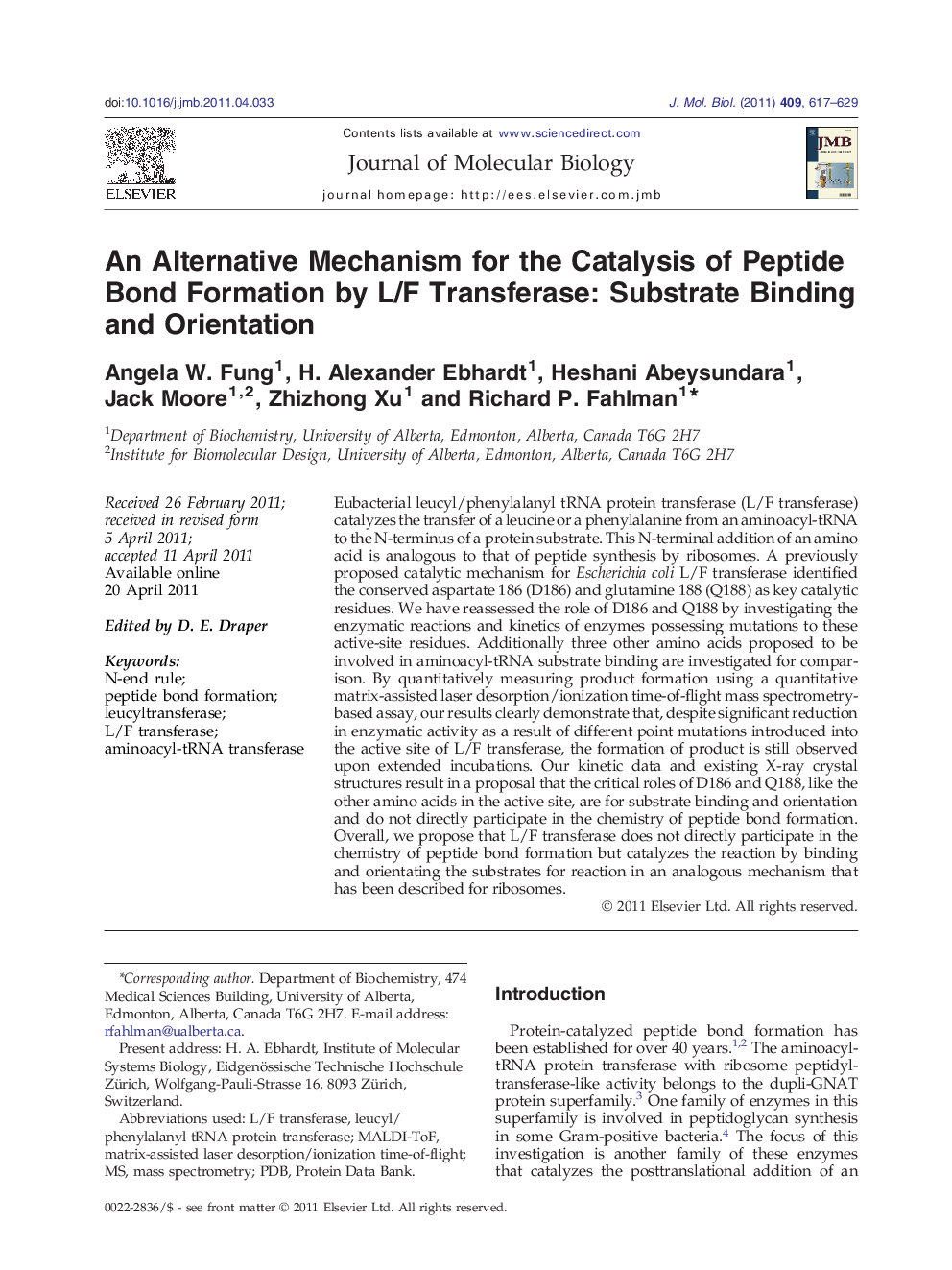| کد مقاله | کد نشریه | سال انتشار | مقاله انگلیسی | نسخه تمام متن |
|---|---|---|---|---|
| 2185356 | 1095974 | 2011 | 13 صفحه PDF | دانلود رایگان |

Eubacterial leucyl/phenylalanyl tRNA protein transferase (L/F transferase) catalyzes the transfer of a leucine or a phenylalanine from an aminoacyl-tRNA to the N-terminus of a protein substrate. This N-terminal addition of an amino acid is analogous to that of peptide synthesis by ribosomes. A previously proposed catalytic mechanism for Escherichia coli L/F transferase identified the conserved aspartate 186 (D186) and glutamine 188 (Q188) as key catalytic residues. We have reassessed the role of D186 and Q188 by investigating the enzymatic reactions and kinetics of enzymes possessing mutations to these active-site residues. Additionally three other amino acids proposed to be involved in aminoacyl-tRNA substrate binding are investigated for comparison. By quantitatively measuring product formation using a quantitative matrix-assisted laser desorption/ionization time-of-flight mass spectrometry-based assay, our results clearly demonstrate that, despite significant reduction in enzymatic activity as a result of different point mutations introduced into the active site of L/F transferase, the formation of product is still observed upon extended incubations. Our kinetic data and existing X-ray crystal structures result in a proposal that the critical roles of D186 and Q188, like the other amino acids in the active site, are for substrate binding and orientation and do not directly participate in the chemistry of peptide bond formation. Overall, we propose that L/F transferase does not directly participate in the chemistry of peptide bond formation but catalyzes the reaction by binding and orientating the substrates for reaction in an analogous mechanism that has been described for ribosomes.
Graphical AbstractFigure optionsDownload high-quality image (109 K)Download as PowerPoint slide
Journal: Journal of Molecular Biology - Volume 409, Issue 4, 17 June 2011, Pages 617–629